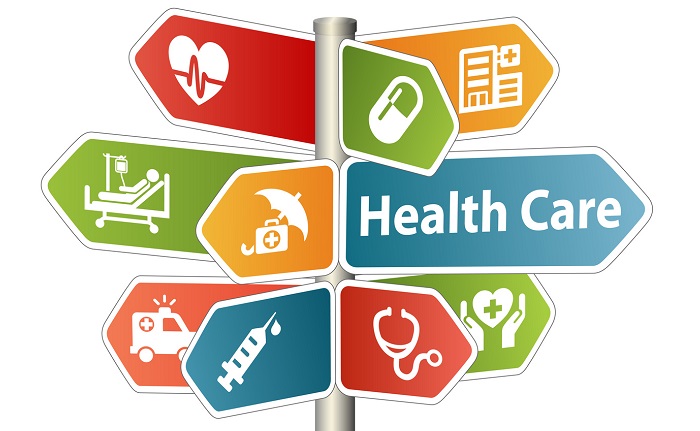
When you turn 26 health insurance becomes a major life event. The Affordable Care Act (ACA) mandates that young adults can remain on their parents’ health insurance plans until this age. However, once you reach 26, you’ll need to find your own coverage. This transition can be daunting, but it’s essential to be prepared.
This guide will explore the various options available to you, including individual, employer-sponsored, and government-sponsored plans. We’ll discuss the importance of continuous coverage and help you navigate the complexities of health insurance terminology. By the end, you’ll have a better understanding of how to find the right health insurance plan for your needs.
Health Insurance Changes at 26
Turning 26 is a significant milestone for many reasons, including the impact it has on your health insurance coverage. The Affordable Care Act (ACA) introduced important changes to how young adults can access health insurance, and understanding these changes is crucial for ensuring you have the coverage you need.
The Affordable Care Act and Young Adults
The Affordable Care Act, also known as Obamacare, was enacted in 2010 with the goal of expanding health insurance coverage to millions of Americans, including young adults. One of the key provisions of the ACA is the ability for young adults to stay on their parents’ health insurance plan until they turn 26, regardless of their marital status or whether they are dependent on their parents for financial support.
Key Provisions of the ACA Regarding Health Insurance Coverage for Young Adults
The ACA has several key provisions that directly affect young adults’ access to health insurance:
- Staying on a Parent’s Plan: The ACA allows young adults to stay on their parents’ health insurance plan until they turn 26, regardless of their marital status, employment status, or whether they are a student. This provision is crucial for young adults who may be transitioning into adulthood, starting their careers, or pursuing higher education.
- Pre-Existing Conditions: The ACA prohibits health insurance companies from denying coverage or charging higher premiums based on pre-existing conditions. This means that young adults with health conditions like asthma, diabetes, or mental health issues can access affordable coverage without facing discrimination.
- Essential Health Benefits: The ACA requires health insurance plans to cover essential health benefits, including preventive care, hospitalization, prescription drugs, and mental health services. This ensures that young adults have access to a comprehensive range of health care services.
- Affordable Coverage: The ACA provides subsidies and tax credits to help individuals and families afford health insurance. These subsidies are available to those who meet certain income requirements, making health insurance more accessible for young adults who may be starting their careers and earning lower incomes.
Options for Obtaining Health Insurance After 26
Turning 26 is a significant milestone, and it also marks the end of your eligibility for your parents’ health insurance plan. This can seem daunting, but don’t worry, there are several options available to ensure you have health coverage.
This section explores the different health insurance options available to individuals who have aged out of their parents’ plans. It delves into the characteristics of each option, compares and contrasts their features, and highlights important factors to consider when choosing a plan.
Individual Health Insurance Plans
Individual health insurance plans are purchased directly from an insurance company. This option offers flexibility in choosing a plan that suits your needs and budget.
Here’s a breakdown of key aspects:
- Coverage: These plans offer a wide range of coverage options, from basic plans to comprehensive plans that cover a wide range of medical services.
- Cost: Premiums for individual plans are typically higher than employer-sponsored plans, as the individual bears the entire cost. However, premium costs can vary based on factors such as age, location, health status, and plan type.
- Provider Network: Individual plans often have a narrower network of providers compared to employer-sponsored plans. It’s essential to verify that your preferred doctors and hospitals are in the plan’s network.
- Flexibility: One of the biggest advantages of individual plans is their flexibility. You can choose a plan that best meets your individual needs and budget, without having to rely on your employer’s choices.
Employer-Sponsored Health Insurance Plans
If you are employed, your employer may offer health insurance as a benefit. This is often a more affordable option than individual plans, as employers often contribute to the premium costs.
Here are some key considerations:
- Coverage: Employer-sponsored plans typically offer a range of coverage options, from basic plans to comprehensive plans with extensive benefits.
- Cost: Employers usually contribute to the premium costs, making these plans more affordable than individual plans. The employee’s contribution is typically deducted from their paycheck.
- Provider Network: Employer-sponsored plans usually have a wider network of providers compared to individual plans. This is because they are often negotiated with larger insurance companies.
- Limited Choice: While employer-sponsored plans can be affordable, they may offer limited choices in terms of plan options. You may not have the same flexibility as you would with an individual plan.
Government-Sponsored Health Insurance Plans
The government offers several health insurance programs for individuals who meet specific eligibility criteria. These programs are designed to provide affordable health coverage to low-income individuals, families, and those with certain medical conditions.
Here are some of the most common government-sponsored health insurance programs:
- Medicaid: This program provides health coverage to low-income individuals and families. Eligibility is based on income and other factors.
- Medicare: This program provides health coverage to individuals aged 65 and older, as well as those with certain disabilities. It is funded through payroll taxes.
- Children’s Health Insurance Program (CHIP): This program provides health coverage to children from low-income families who do not qualify for Medicaid.
The Importance of Continuous Coverage

Maintaining continuous health insurance coverage is crucial for individuals who have aged out of their parents’ plans. Gaps in coverage can lead to significant financial and health-related consequences.
Pre-existing Conditions
Pre-existing conditions refer to health issues you had before obtaining health insurance. These conditions can impact your insurance premiums, potentially making coverage more expensive. Insurance companies may consider your pre-existing conditions when determining your risk level, which can influence your premium. For instance, if you have a history of diabetes, your premiums might be higher compared to someone without that condition. It’s important to note that the Affordable Care Act (ACA) prohibits insurance companies from denying coverage or charging higher premiums based solely on pre-existing conditions. However, pre-existing conditions can still impact your premium calculations.
Understanding Health Insurance Terminology
Navigating the world of health insurance can be confusing, especially with the various terms and concepts involved. Understanding these terms is crucial for making informed decisions about your coverage and maximizing its benefits. This section will delve into some common health insurance terms and their significance.
Key Components of a Health Insurance Plan
A health insurance plan is a complex system with various components that work together to provide coverage. Understanding these components is essential for comprehending the overall structure and benefits of a plan.
- Deductible: This is the amount you pay out-of-pocket before your insurance coverage kicks in. For example, if your deductible is $1,000, you will need to pay the first $1,000 of your medical expenses yourself before your insurance starts covering the remaining costs.
- Co-pay: This is a fixed amount you pay for specific services, such as doctor visits or prescriptions, after your deductible has been met. Co-pays are typically a small amount, ranging from $10 to $50, depending on the service and your plan.
- Co-insurance: This is a percentage of the medical costs you pay after your deductible has been met. For example, if your co-insurance is 20%, you will pay 20% of the cost of covered services, while your insurance company covers the remaining 80%.
- Out-of-Pocket Maximum: This is the maximum amount you will pay out-of-pocket for covered medical expenses in a year. Once you reach this limit, your insurance company will cover 100% of the remaining costs for the rest of the year.
- Premium: This is the monthly or annual payment you make to your insurance company for coverage. The premium amount varies based on factors like your age, location, health status, and the type of plan you choose.
| Component | Description | Example |
|---|---|---|
| Deductible | Amount you pay out-of-pocket before insurance coverage begins | $1,000 |
| Co-pay | Fixed amount you pay for specific services | $20 for a doctor visit |
| Co-insurance | Percentage of medical costs you pay after deductible | 20% |
| Out-of-Pocket Maximum | Maximum amount you pay out-of-pocket in a year | $6,000 |
| Premium | Monthly or annual payment for coverage | $300 per month |
Filing a Health Insurance Claim
The process of filing a health insurance claim can be overwhelming, but it’s essential for receiving reimbursement for covered medical expenses. Here’s a simplified flowchart illustrating the general steps involved:
- Receive Medical Services: You receive medical treatment from a healthcare provider.
- Obtain Medical Bills: The healthcare provider provides you with a detailed bill for the services rendered.
- File a Claim: You submit the claim form to your insurance company, typically through their website or by mail. You will need to provide your insurance information, the healthcare provider’s information, and the medical bill.
- Claim Processing: Your insurance company reviews your claim and verifies its eligibility for coverage.
- Payment: If the claim is approved, your insurance company will pay the healthcare provider directly, or reimburse you for the covered expenses. You may be responsible for paying any remaining balance, such as your deductible, co-pay, or co-insurance.
Resources and Support

Navigating the world of health insurance can feel overwhelming, especially when you’re facing a significant change like turning 26. Thankfully, there are numerous resources available to help you understand your options and find the right coverage for your needs. This section will provide information about reputable organizations and government agencies that can guide you through the process.
Government Agencies and Non-Profit Organizations, When you turn 26 health insurance
These organizations offer valuable assistance with health insurance enrollment and can help you navigate the complexities of the system.
- HealthCare.gov: The official website for the Affordable Care Act (ACA), HealthCare.gov provides a comprehensive resource for finding and enrolling in health insurance plans. You can use their online marketplace to compare plans, calculate subsidies, and complete your enrollment. You can also contact their customer service team for assistance with the application process.
- The Centers for Medicare & Medicaid Services (CMS): CMS is the federal agency responsible for administering Medicare, Medicaid, and the Children’s Health Insurance Program (CHIP). Their website provides information about these programs and offers resources for individuals seeking health insurance coverage.
- State Health Insurance Assistance Programs (SHIP): These programs offer free, unbiased counseling and assistance to individuals seeking health insurance coverage. SHIP counselors can help you understand your options, compare plans, and complete your enrollment.
- The National Association of Insurance Commissioners (NAIC): The NAIC is a non-profit organization that represents state insurance regulators. Their website provides information about health insurance regulations, consumer protection, and resources for individuals seeking health insurance coverage.
Finding and Enrolling in a Health Insurance Plan
The process of finding and enrolling in a health insurance plan can seem daunting, but with the right guidance, it can be manageable.
- Start by understanding your needs: Consider factors such as your budget, medical history, and preferred healthcare providers. This will help you narrow down your options and choose a plan that meets your specific requirements.
- Compare plans: Use online tools like HealthCare.gov or websites from reputable insurance companies to compare plans based on premiums, deductibles, co-pays, and coverage. Be sure to read the plan details carefully to understand what’s covered and what’s not.
- Seek assistance: If you need help navigating the process, reach out to the resources mentioned above. Government agencies and non-profit organizations can provide guidance and support throughout your enrollment journey.
- Enroll during the open enrollment period: Open enrollment is the designated time frame when you can apply for health insurance coverage. Missing the open enrollment period can limit your options, so be sure to mark your calendar and enroll on time.
Outcome Summary

Turning 26 is a significant milestone, and navigating the world of health insurance can feel overwhelming. Remember, you have options, and there are resources available to help you. Take the time to explore your choices, compare plans, and choose the coverage that best suits your circumstances. With a little planning and research, you can ensure that you have the health insurance protection you need as you enter this new chapter of your life.
Popular Questions: When You Turn 26 Health Insurance
What happens if I don’t have health insurance after I turn 26?
You could face penalties for not having health insurance, and you may be responsible for the full cost of any medical care you need.
Can I get health insurance if I’m unemployed?
Yes, there are options available for individuals who are unemployed. You can explore individual plans through the marketplace or consider government-sponsored programs like Medicaid.
What if I have a pre-existing condition?
The ACA prohibits insurance companies from denying coverage or charging higher premiums based on pre-existing conditions.
How do I know if I qualify for a government-sponsored plan?
You can visit the official website of the Healthcare.gov to check your eligibility for programs like Medicaid or the Children’s Health Insurance Program (CHIP).





